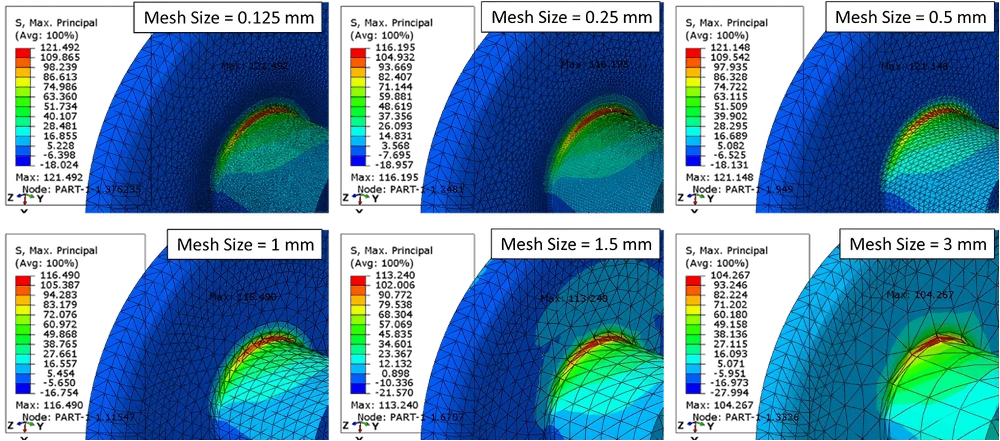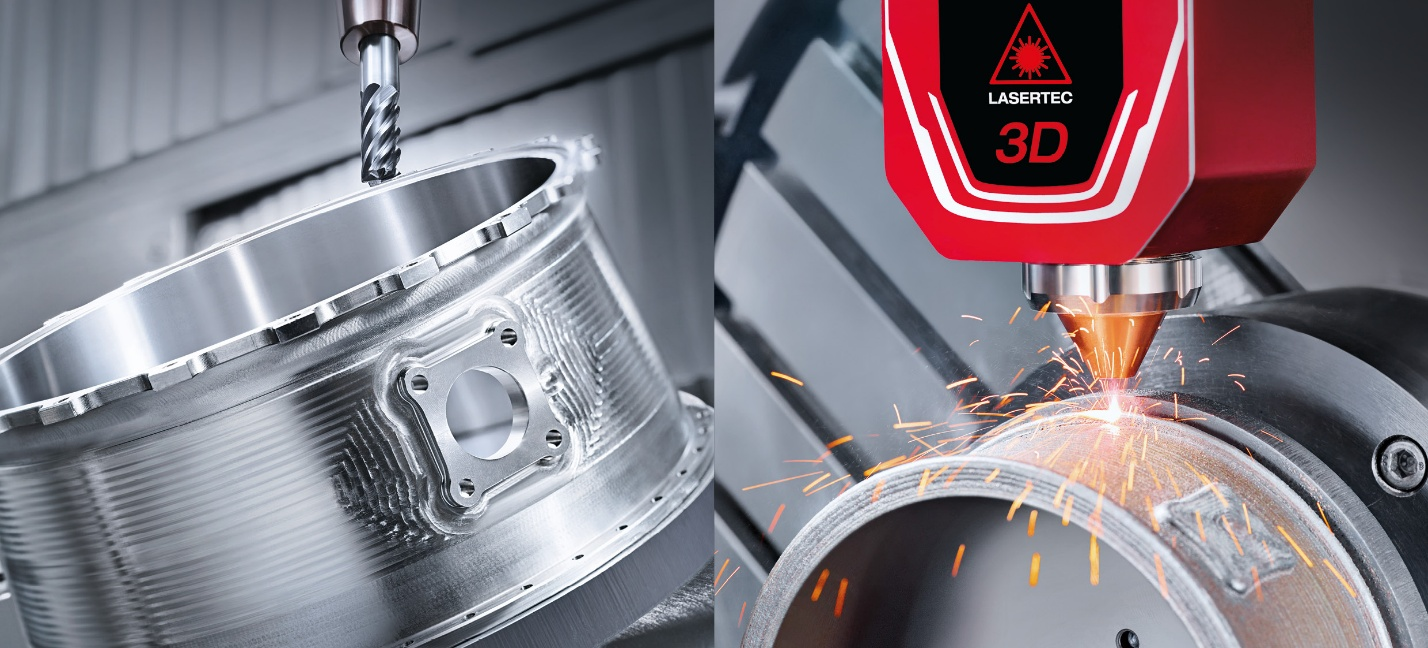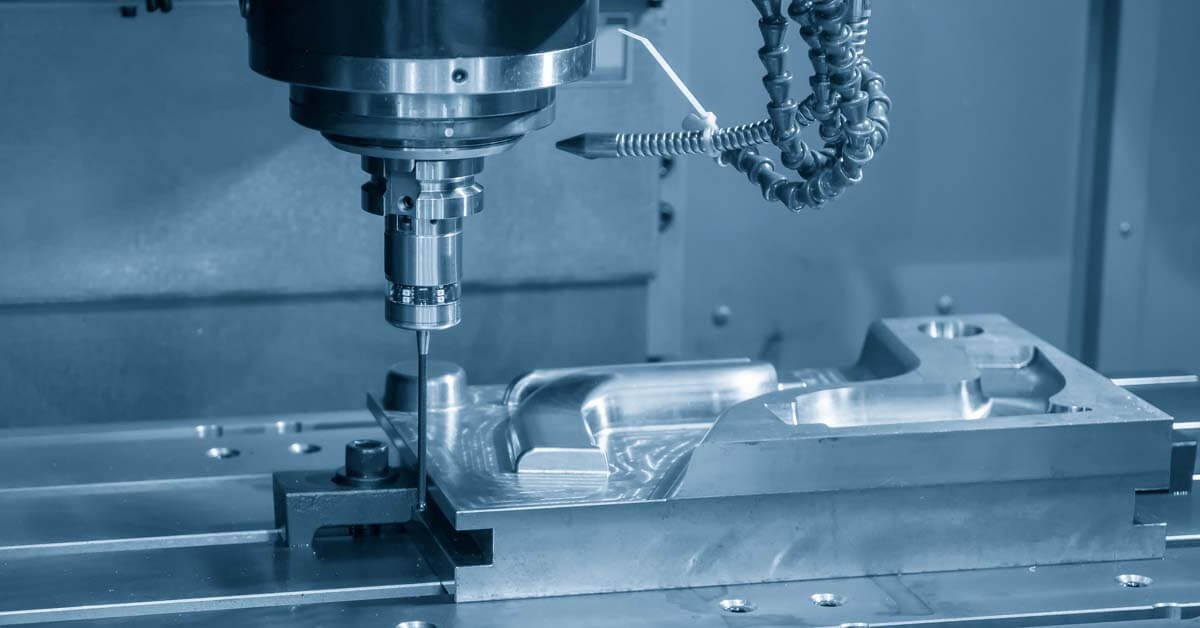What is CNC Machining?
At some points in human evolution, there was a need to create complex three and four-dimensional objects. Of course, most of these 3D objects cannot be made manually. This problem inspired the invention of the technology that evolved into CNC machines. CNC in itself stands for computer numerical control. CNC machines are equipment and tools used for precision, cutting edge accuracy, and reproducibility in three-dimensional manufacturing. These machines are a blend of technology and physical design. The overview of machining is simple: machinists convert diagrams into code (this code is called G-Code) and input the codes into the computer. The computer then processes the code and prompts the machine to reproduce the image in 3D. Essentially, a CNC machine can cut, drill, smoothen a raw material to make complex angles, designs, and shapes with instructions from a machinist.
However, there are several variations of CNC machines in the market today. Looking from the surface, it may be a little bit challenging to distinguish one from the other. Despite the similar functions these technologies perform, there are important distinctions. The knowledge of these distinctions is important. They help a machinist to make informed decisions to achieve optimal results with respect to specific projects.
CNC milling and CNC turning are dominant types of CNC machining that are most times confused for each other. In the subsequent paragraphs, the article explores CNC milling and turning from the standpoints of their pros and cons. It also explores the operational differences between these two machining technologies. If you are curious about which one is best for you, you may want to read to the end.
What is CNC Milling?
Machining technologies work in different forms. A milling machining tech may be useful for thermal precision, chemical design, electrical, and mechanical processes. CNC milling is – in most cases – a mechanical machining technology. It is useful in shaping the material into finished products through cutting. Milling used to be a manual thing. It did require expertise, technical know-how, and thoroughness. With CNCs, milling is more precise, fast, and less stressful. Milling machines cut off part of raw material in a controlled and clean proportion.

Components of a CNC Milling Machine

How do you recognize a CNC milling machine when you see one? Here are some of the most important components it has
1. Machine Tool – This component is held by the spindle on a milling machine. The primary functioning of a machine tool is to remove. Depending on the sort of finished products you are looking to make, you may need to chip out some parts of the raw material. That is what the machine tool component does. Different types of milling machines have different designs of machine tools, and each of the designs has a specific machining application.
2. Spindle – The meaning of this component is quite universal across mechanical tools. The spindle holds the machine tool and runs it. This component is supported by another called the column, which contains an electrically powered motor that rotates the spindle.
3. Column – This can be likened to the main body of the machine. It is the basis of the machine's structural integrity. The column gives support to all the other components of the milling machine. Usually, it is designed with a base, and space for other things necessary for a successful milling process.
4. Worktable – Just as the name implies, it is that surface where you place your raw material, and (if need be) fasten it. Usually, a worktable is located on the saddle of the milling machine. The worktable is designed differently for different types of milling machines. Some can be adjusted while some cannot. They also come in different angles – vertical, horizontal, or both ways.
5. Saddle – This machine component is located directly on top of the knee. It is instrumental in holding and adjusting the worktable, as the circumstances require.
6. Knee – The knee is a key component of the milling machine. It is one of those components that are necessary for precision and smooth work output. The knee is usually adjustable and it primarily provides support to the machine saddle and the column.
7. Interface – This component is fully called Machine interface. It is the part of the machine with the buttons and the input keys. This is where you input the necessary code specifications you want to see in the output.
8. Arbor – Not all milling machines have an arbor. It is only present in horizontal machines, and it primarily serves as a platform for mounting more than one machine tool. There are different types of the arbor, and they are usually fixed into the spindle when they are needed.
9. Ram – Like the Arbor, this component cannot be found in all machines. It is present in Vertical machines, and it is used primarily for spindle support.
Advantages of CNC Milling
Milling has some advantages that set it apart from other machining processes. What are these advantages?
• Versatility – CNC milling machines are also known for their range. Through the different capabilities they have, CNC mills have been used to execute a wide range of designs regardless of the shape and the complexity. They also perform a range of operations, unlike any other machining process. Due to this, they are useful in making different prototypes in rapid succession
• Cost-effectiveness – CNC milling machines are part of the most affordable CNC machines in the world as of today. They are optimal for small-scale manufacturers and production startups.
• Fast and Precise – These machines are popular for delivering accurate results in a short amount of time. As proof, some milling machines can feature as many as 30 different tools with automated functionality as the production progresses. By extension, CNC mills are known for absolute replication of input with a continuous supply of raw material. Essentially, they produce finer designs with little or non-existent error margin.
• Multiple choice of raw material– There is a considerable range of raw material manufacturers can choose from with CNC mills. Major examples include glass, metals, aluminum, plastics, acrylic materials, and so on.
• Conserves raw material – The mill works with such precision that wastage of raw material is minimized considerably. As a result of that, the manufacturing process is relatively cheap and cost-effective.
Disadvantages of CNC Milling
Of course, there are disadvantages to using CNC mills. What are these disadvantages and what possible downsides do they pose to manufacturers?
1. Low volume capability – CNC mills are more effective for prototyping, post-machining, or low-volume manufacturing processes. Most times, and as a result of their design, CNC milling machines cannot handle high volume productions, they break down.
2. Not many people can operate it – It is true that for the most part of the production, a CNC mill works automatically. Despite the automation, a manufacturer needs considerable knowledge of G-codes, technical drawing, angles, shapes, designs, and many more, to successfully operate a CNC mill.
Applications of CNC milling
The following parts were manufactured with CNC milling tech;
• Gears – CNC mills are instrumental in making the teeth of a gear. These machines are used in making both straight, and spiral gears.
• Hydraulic pumps – Water pump impellers can be made with precision using this technology
• Medical devices – Some medical devices like MRI scanners, forceps, ultrasound equipment, catheters, and many more are made with CNC milling machines

• Engine blocks – These and many other parts of automobile engines are made using CNC mills
• Electrical components – Some electrical components like circuit boards and even keyboard holes for laptops are prototyped with CNC mills
• Manufacturing equipment – manufacturing equipment like forming punches are made with CNC mills
• Enclosures – Some houses have enclosed electrical components. A considerable percentage of the enclosures are made from CNC milling machines
• Brackets – Milled brackets are important in various fields like interior decoration, electronics, and so on. They (are) can be made with these machines
• Tools – these machines can be used to make other tools that facilitate smoother milling, for example, mold tools.
• Other examples include fittings and steel screws.
What is CNC turning?

CNC turning is another type of machining that allows manufacturers to make perfect cones, circles, and cylinders in raw material. Alongside routing and milling, it is one of the most popular machining techs people use today. Unlike milling, the capabilities of the turning machine include drilling, boring, parting, knurling, facing, grooving, and so on. It involves a fixed tool that shapes the raw material and a chuck that rotates and holds the raw material. While the raw material is held in a rotating chuck, it is fed to a fixed shaping tool that brings out the desired output. Some experts call it the subtraction machine instead. CNC turning machines are popularly called CNC lathes.
Components of a CNC Lathe
What are some of the physical features of a CNC turning machine?
1. Main Spindle – Most machinists refer to this part as the heart of the Lathe. The main spindle has other spindles alongside the other components that move the lathe like the rotating motor, the lathe gear, and the chuck. The main spindle also contains other tool holders. These tool holders could be fixed or moving, depending on the type of lathe in question.
2. Sub Spindle – This other spindle is inside the main spindle. The presence and even usage of this spindle are optional and totally dependent on the machinist. A sub-spindle synchronizes the main spindle to increase the fluidity of turning. By design, it has the same power as the main spindle.
3. Tool turret – The cutting tools are mounted on this component. It makes it possible for a machinist to switch between tools easily. Depending on the maker of the lathe, a tool turret may or may not have space for multiple tools at once.
4. Headstock – The strength and performance of a lathe are highly dependent on how well this is fixed. The headstock is the component that holds the main spindle at the point where the lathe's chuck is mounted. For quality lathe purchases, machinists lookout for the torque and the speed capacity of the headstock.
5. Tailstock - The tailstock is designed at the end of a component to provide extra support. They are especially very useful in the large-scale turning of long work pieces.
6. Guideway – This tool is in the spindle with the chuck and the motor. What this component does is simple; it guides the tools through horizontal and vertical motions. With the guideway, cutting and shaping are smoother and more precise.
7. Chuck - This component primarily helps hold the work pieces. It is connected to the motor inside the spindle. This motor helps rotate the firm work piece and the spindle.
8. Machine bed – This is not essentially a component. Rather, it is the base of the whole lathe. It is that base where all other components are mounted on.
Advantages of CNC turning
What benefits could a machinist possibly get from using a CNC lathe?
1. Makes complex designs – By the virtue of design, this method can produce more complex and beautiful designs when compared to the others machination technologies.
2. Makes quicker design – CNC turning tech is fast. In fact, it is faster than CNC milling technology. It shapes out the raw material with ease, and quicker.
3. Can handle huge production – Unlike the CNC mills that are suitable for prototypes and one-off projects, CNC lathes can handle large products and run multiple machination processes without breaking down.
4. Very precise shaping – No other machine has a lathes precision especially when it comes to rounded designs. It is highly relevant and most times in high demand because of this.
5. Consumes less energy – A lathe is designed to consume a relatively lower amount of energy than most of the other machination engines.
Disadvantages of CNC turning
What downsides does a lathe pose to the machinist?
1. Wastage – The lathe is not so good at conserving raw material like other machination technologies. During the shaping process, it cuts out chunks of materials that may be conserved with a mill or a router.
2. Not as Versatile – The lathe is not as versatile as the mill. It is limited to round shapes only.
3. Expensive cost of operation – The cost of purchase and the primary cost of maintenance is high for a lathe. NOTE: It is important that machinists perform checkup routines on a lathe, more than any other machination tech.
4. Highly Technical to use – To use a lathe, a machinist has to input a new set of code for every action. Therefore, the operator needs to be skilled in coding, design, measurement, circle geometry, and related concepts.
Applications of CNC Turning
What are practical examples of materials made from turning?
• Guns and other Firearms – The tubular barrel of guns and other firearms can be made using a lathe.
• Bolts and Nuts – Considering the way bolts and nuts are shaped and their level of tolerance, they can be made from the turning process.
• Nozzles – The cylindrical shape and hollow body of nozzles can be cut out with a lathe.
• Turbine blades – For rounded turbine blades with tolerance, it makes sense if they are designed with lathes.
• Ball and socket Joints – Turning processes are used for making round joints between parts of a working engine.
• Other examples include flanges, rollers, and so on.
CNC milling vs CNC turning: Comparison and Differences
• Speed – Of course, both are fast. However, for faster machination, machinists use the lathe (that is CNC turning). It works faster and with relative ease.
• Conservation – The CNC mills are more conservatory than the lathes. They reduce the wastage of raw material by a considerable percentage.
• Versatility – CNC mills are more versatile, they can make more shapes than the other machinations tech combined.
• Precision and Complexity – CNC lathes are more precise and they are effective in shaping out more complex designs than a CNC mill.
• Cost-effectiveness – CNC lathes are expensive to purchase; they are more expensive than mills. However, with CNC lathes, production is more cost-effective and cheaper.
• Scale of operation – In most cases, mills are suitable for post machination, refining, prototyping, and small-scale production processes. To handle mass and heavy production, a CNC turner is more effective.
Which one should you choose?
You have to put the following into consideration before you choose the machination techs above.
1. Type of operation – As a rule of thumb, it is best to choose the lathe for rounded operations. For other complex and irregular shapes, a CNC mill is what you need.
2. Scale of operation – Mills are more suitable for small and medium-scale operations. For larger operations, a CNC lathe is your best shot at speedy and refined production.
3. Cost goals– If a machinist wants a cheaper cost, then the best shot is a CNC mill. However, a lathe is more suitable for cost-effective production processes.
But who says you must choose? As a machinist, integrating the two machination technologies is the key to perfection. You can use lathes for complex rounded operations and mills to add finishing touches. It could also be that you need to make holes after milling a raw material. Whatever the project, combining the two types of machinations improve smoothness, efficiency, and aesthetics.
Conclusion
There is more to machination than just the milling and the turning. You should never hesitate to ask questions, read up and learn more. Finally, there are machines that combine turning and milling centers. If you have the means, you can try these engines out; they are a worthy investment, especially if machination is your primary business.








